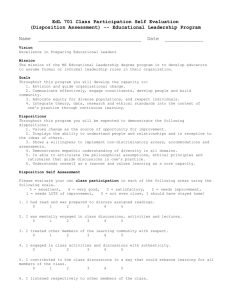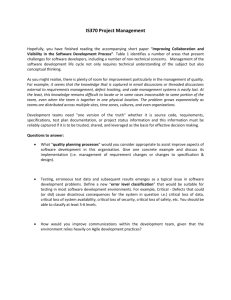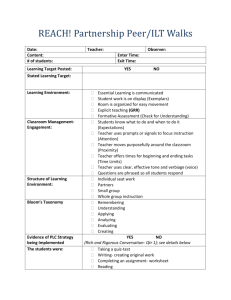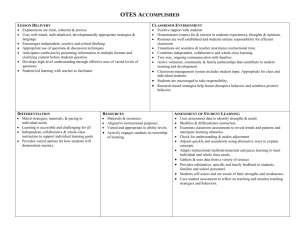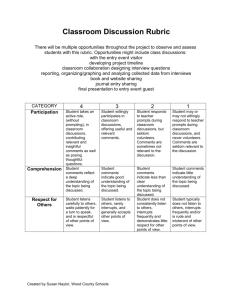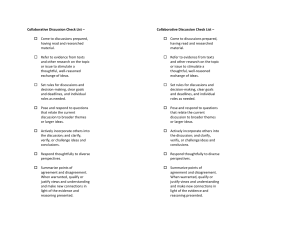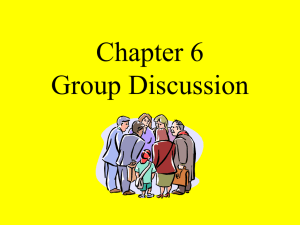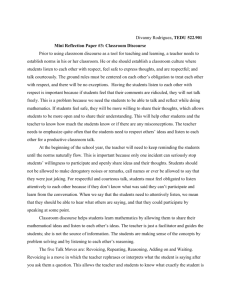I Think
advertisement
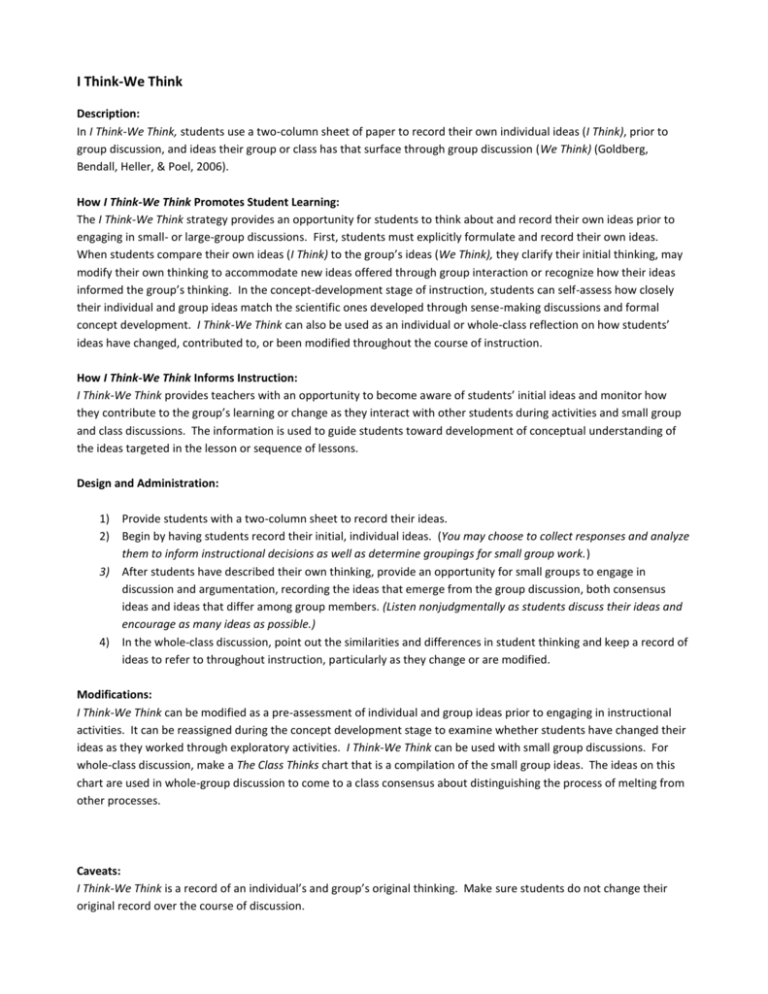
I Think-We Think Description: In I Think-We Think, students use a two-column sheet of paper to record their own individual ideas (I Think), prior to group discussion, and ideas their group or class has that surface through group discussion (We Think) (Goldberg, Bendall, Heller, & Poel, 2006). How I Think-We Think Promotes Student Learning: The I Think-We Think strategy provides an opportunity for students to think about and record their own ideas prior to engaging in small- or large-group discussions. First, students must explicitly formulate and record their own ideas. When students compare their own ideas (I Think) to the group’s ideas (We Think), they clarify their initial thinking, may modify their own thinking to accommodate new ideas offered through group interaction or recognize how their ideas informed the group’s thinking. In the concept-development stage of instruction, students can self-assess how closely their individual and group ideas match the scientific ones developed through sense-making discussions and formal concept development. I Think-We Think can also be used as an individual or whole-class reflection on how students’ ideas have changed, contributed to, or been modified throughout the course of instruction. How I Think-We Think Informs Instruction: I Think-We Think provides teachers with an opportunity to become aware of students’ initial ideas and monitor how they contribute to the group’s learning or change as they interact with other students during activities and small group and class discussions. The information is used to guide students toward development of conceptual understanding of the ideas targeted in the lesson or sequence of lessons. Design and Administration: 1) Provide students with a two-column sheet to record their ideas. 2) Begin by having students record their initial, individual ideas. (You may choose to collect responses and analyze them to inform instructional decisions as well as determine groupings for small group work.) 3) After students have described their own thinking, provide an opportunity for small groups to engage in discussion and argumentation, recording the ideas that emerge from the group discussion, both consensus ideas and ideas that differ among group members. (Listen nonjudgmentally as students discuss their ideas and encourage as many ideas as possible.) 4) In the whole-class discussion, point out the similarities and differences in student thinking and keep a record of ideas to refer to throughout instruction, particularly as they change or are modified. Modifications: I Think-We Think can be modified as a pre-assessment of individual and group ideas prior to engaging in instructional activities. It can be reassigned during the concept development stage to examine whether students have changed their ideas as they worked through exploratory activities. I Think-We Think can be used with small group discussions. For whole-class discussion, make a The Class Thinks chart that is a compilation of the small group ideas. The ideas on this chart are used in whole-group discussion to come to a class consensus about distinguishing the process of melting from other processes. Caveats: I Think-We Think is a record of an individual’s and group’s original thinking. Make sure students do not change their original record over the course of discussion.


